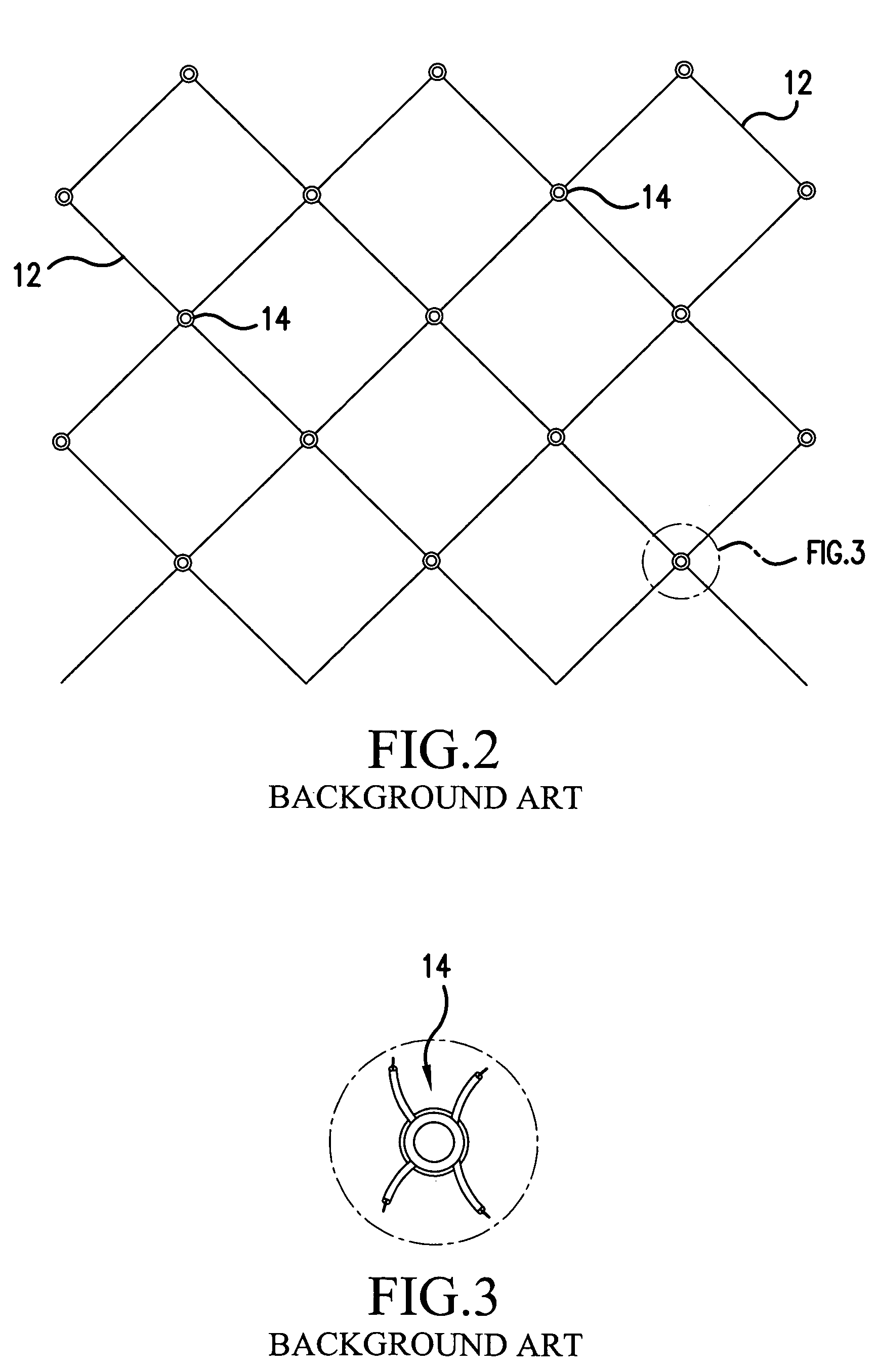Clips for holding fiber optic cables of a security fence
a technology for security fences and fiber optic cables, applied in the field of clips, can solve problems such as the exposure of the flattened end, and achieve the effects of easy manufacture, easy installation, and easy breakage or cutting
- Summary
- Abstract
- Description
- Claims
- Application Information
AI Technical Summary
Benefits of technology
Problems solved by technology
Method used
Image
Examples
Embodiment Construction
[0038]Referring to FIG. 7, a clip, in accordance with the present invention, generally includes a first part 40, an insert 42 and a second part 44. With reference to FIGS. 7–12, the first part 40 has the appearance of a circular disc when viewed from its top (FIG. 9).
[0039]A bottom of the first part 40 (FIGS. 8 and 10) is more complex in shape. A first curved channel 46 and a second curved channel 48 form geometric cords to the outer perimeter of the first part 40. The first and second curved channels 46 and 48 meet in a central space 50 formed in the bottom of the first part 40. Hence, the first and second curved channels 46 and 48 form an embedded X-shape in the bottom of the first part 40.
[0040]The first part 40 includes a first stepped ledge 52. The first stepped ledge 52 extends radially inward from an outermost periphery of the bottom of the first part 40.
[0041]Engagement walls 54 extend down from the first stepped ledge 52. As illustrated in FIGS. 7, 8, 11 and 12, the engagem...
PUM
 Login to View More
Login to View More Abstract
Description
Claims
Application Information
 Login to View More
Login to View More - R&D
- Intellectual Property
- Life Sciences
- Materials
- Tech Scout
- Unparalleled Data Quality
- Higher Quality Content
- 60% Fewer Hallucinations
Browse by: Latest US Patents, China's latest patents, Technical Efficacy Thesaurus, Application Domain, Technology Topic, Popular Technical Reports.
© 2025 PatSnap. All rights reserved.Legal|Privacy policy|Modern Slavery Act Transparency Statement|Sitemap|About US| Contact US: help@patsnap.com



